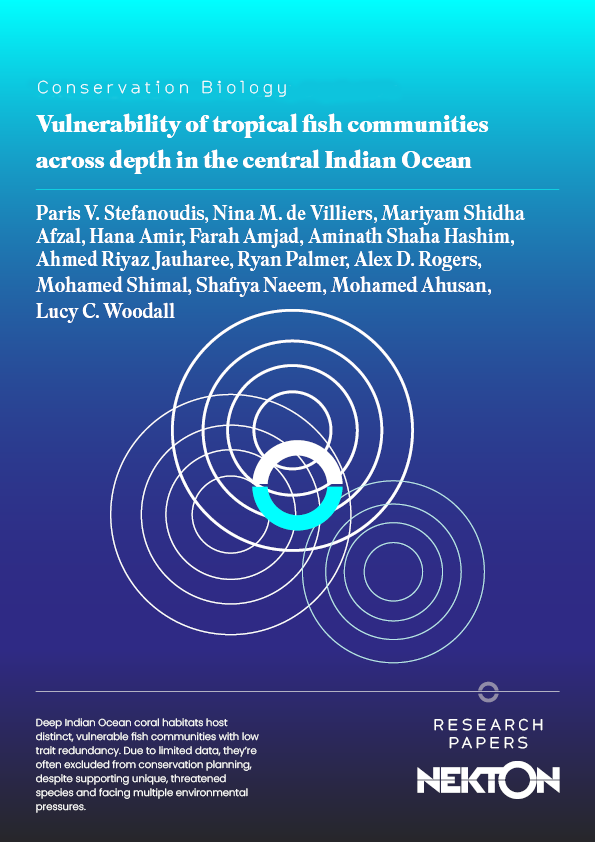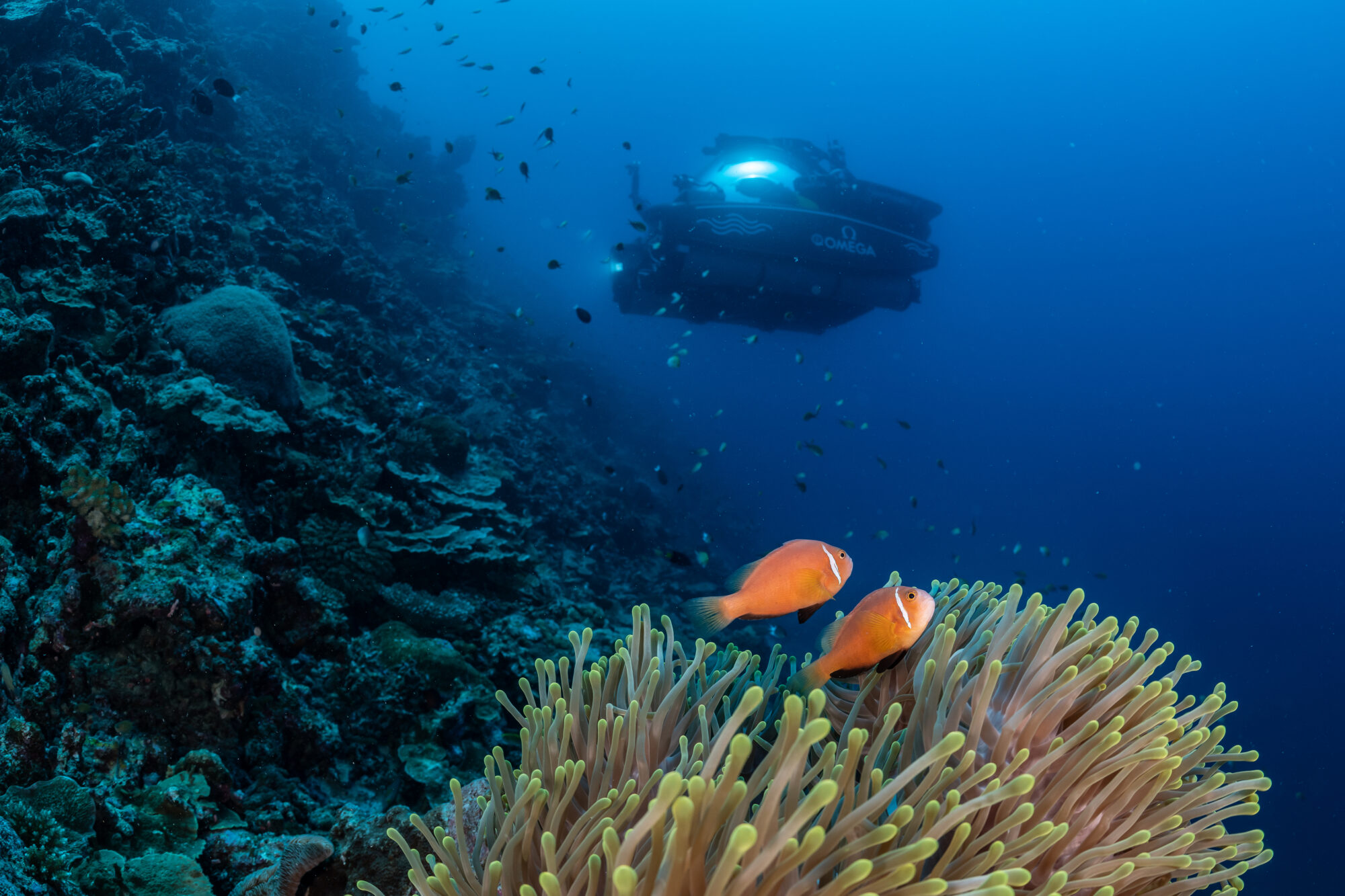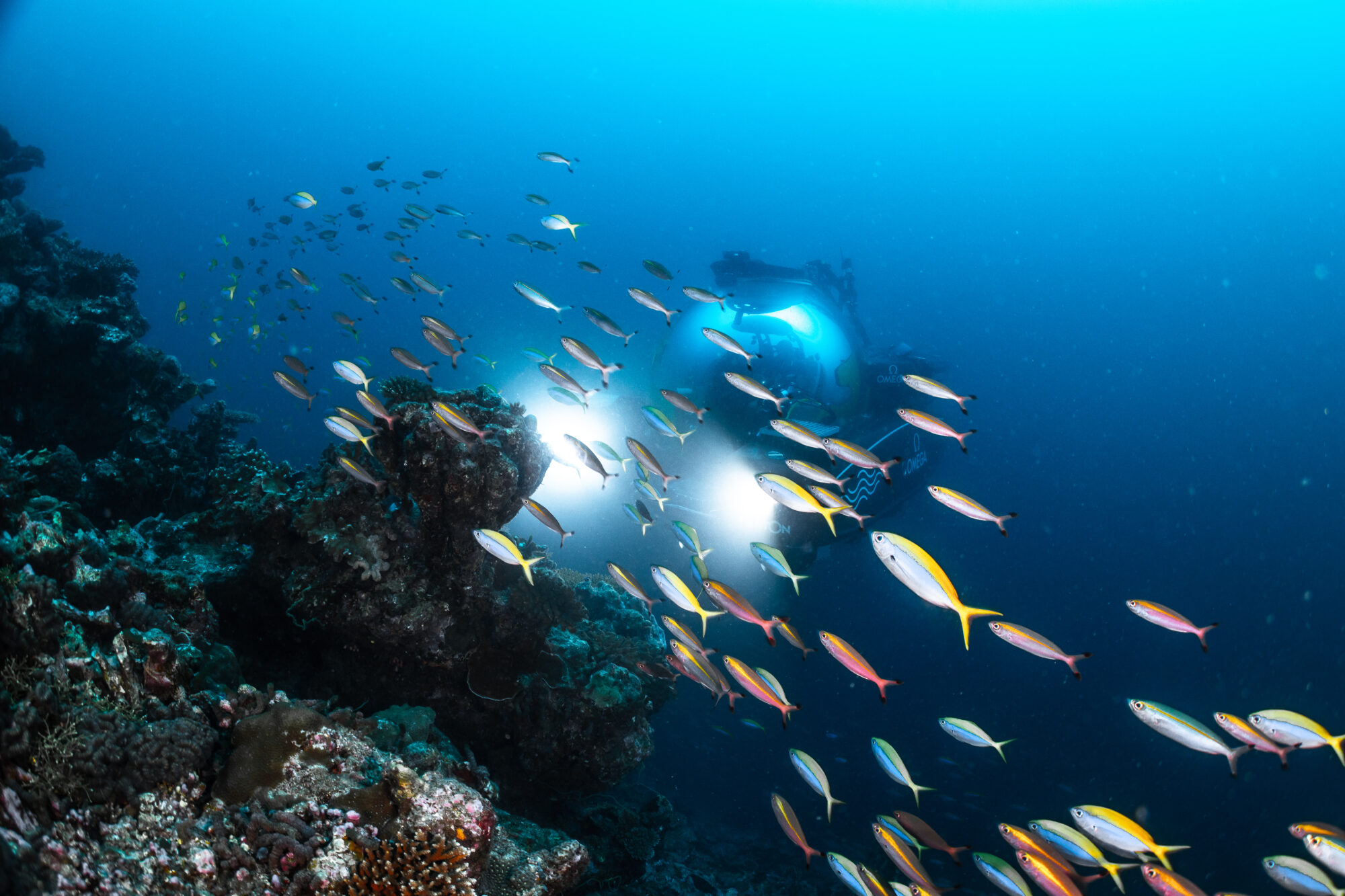Vulnerability of tropical fish communities across depth in the central Indian Ocean


Coral reefs and their fish communities below scuba diving depth (>30 m), in mesophotic coral ecosystems (MCEs) (∼30–150 m), in rariphotic (150–300 m), and in upper bathyal waters (300–500 m) are often underexplored, especially in the Indian Ocean. The paucity of data, including on the biodiversity, ecology, and vulnerability of these habitats and the communities they support, leads to their omission from most conservation and management decisions and practices. We investigated for the first time the structure and diversity (taxonomic and functional) of demersal fish communities from the central and southern atolls of the Maldives, spanning a wide bathymetric gradient of 2–500 m to better understand whether and how their vulnerability changes across depth.
Abundance and biomass data from transect surveys of demersal fishes were combined with species’ trait data representing life histories to estimate a series of taxonomic-based and functional-based diversity metrics. Distinct fish communities occurred across the different surveyed depths, highlighting the unique biological characteristics of MCEs and deep-sea coral habitats in the Indian Ocean. Taxonomic and functional diversity decreased as depth increased, and there was little overlap between species’ life-history strategies. This suggests deep habitats are more vulnerable than shallow habitats to disturbance events given low levels of trait redundancy that buffer species’ trait loss.
Moreover, many fishes living in MCE and deep-sea habitats were among the most functionally unique species (e.g., sharks and rays) and all were threatened with extinction. Given the suite of pressures MCEs and deep-sea habitats are subjected to (fishing, thermal stress, pollution), their vulnerability to disturbance, and the species of conservation concern they support, we suggest they should be considered as priorities in ongoing and future conservation and marine spatial planning initiatives in the region and globally.
Authors
Paris V. Stefanoudis, Nina M. de Villiers, Mariyam Shidha Afzal, Hana Amir, Farah Amjad, Aminath Shaha Hashim, Ahmed Riyaz Jauharee, Ryan Palmer, Alex D. Rogers, Mohamed Shimal, Shafiya Naeem, Mohamed Ahusan, Lucy C. Woodall

